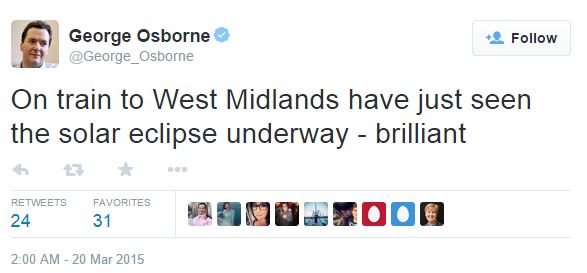For people in London and much of the south east of England, the much-anticipated solar eclipse was an anticlimax as overcast skies blocked any opportunity so see the Moon gradually cover the Sun, and the already dull morning only got a teeny-weeny bit darker.
I was in Hastings, East Sussex, south east England, during the event, standing out in the street expecting everything to go very dark. There was no chance of viewing the phenomenon through eclipse glasses because the sky was a horizon-to-horizon carpet of thick cloud.
As 8.30 am approached we stood there excitedly looking around and asking each other whether anybody had noticed any change (‘No!’).

I took these pictures before (top) and during the partial solar eclipse this morning. A very slight difference in darkness.
When the eclipse came there was huge disappointment. The degree of darkening was every so slight, similar to what one would get before a downpour was imminent.
Still, we waited, expecting something amazing to happen. It didn’t. After a while it got slightly lighter again and we realised it was all over.
One of the crowd said jokingly “Well, that was a bit of a joke. I want my money back,” and we all laughed and returned to work.
London not the centre of events for once
Conditions were the same in London, which for once was not the country’s centre of events.
According to reports across the country, the best places to be were the Midlands, the south west and south Wales. Many parts of Scotland, which had the highest levels of obscuration in the UK, were also blessed with clear skies.
 Chancellor George Osborne, who was on a train to the West Midlands, tweeted excitedly. (Image: Twitter)
Chancellor George Osborne, who was on a train to the West Midlands, tweeted excitedly. (Image: Twitter)
The obscuration (darkness) was deepest in an area of the Norwegian sea just below the Arctic Circle, where the total eclipse lasted for nearly three minutes. About 2,000 people ignored warnings of polar bear attacks and frost bite and made it to Svalbard, the remote Norwegian islands, which saw their population double.
Svalbard and Faroe Islands
The viewers in Svalbard, who had clear skies and spectacular views, cheered throughout the 2.5-minute phenomenon.
The Guardian quoted Hilary Castle from London (who was at Svalbard), who said:
“I was just blown away. I couldn’t believe it. It was just fabulous, just beautiful and at the same time a bit odd and it was too short.”
Those who made it to the Faroe Islands, further south, the only other habitable place to have a total eclipse, were not so lucky. It was overcast and there was rain and wind. But, at least it went completely dark.
ESA Video – Solar Eclipse
The European Space Agency’s Sun-watching Proba-2 minisatellite had a ringside seat from orbit of the solar eclipse. Proba-2 used its SWAP imager to capture the Moon passing in front of the Sun. SWAP views the solar disc at extreme ultraviolet wavelengths to capture the turbulent surface of the Sun and its swirling corona.
